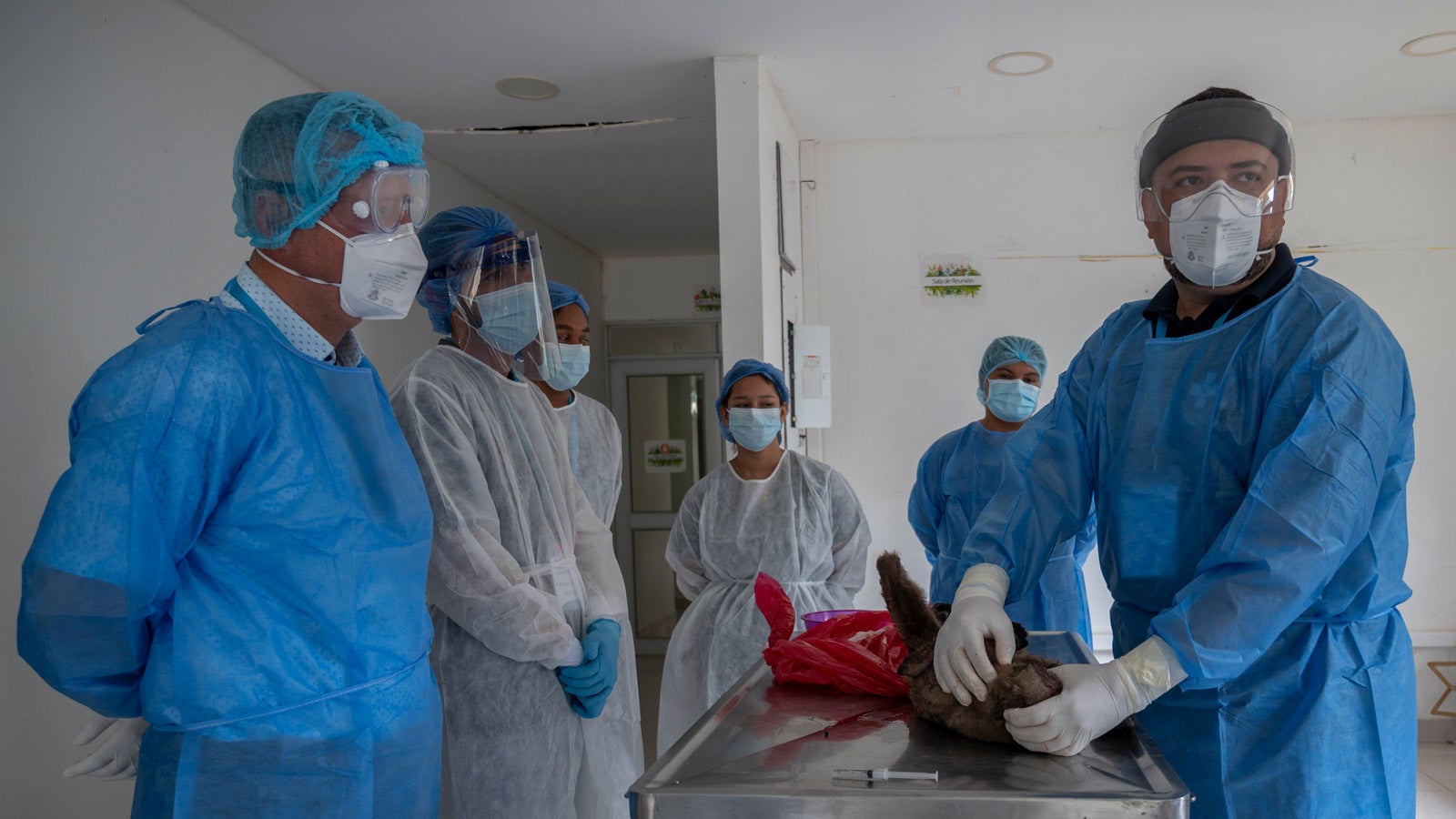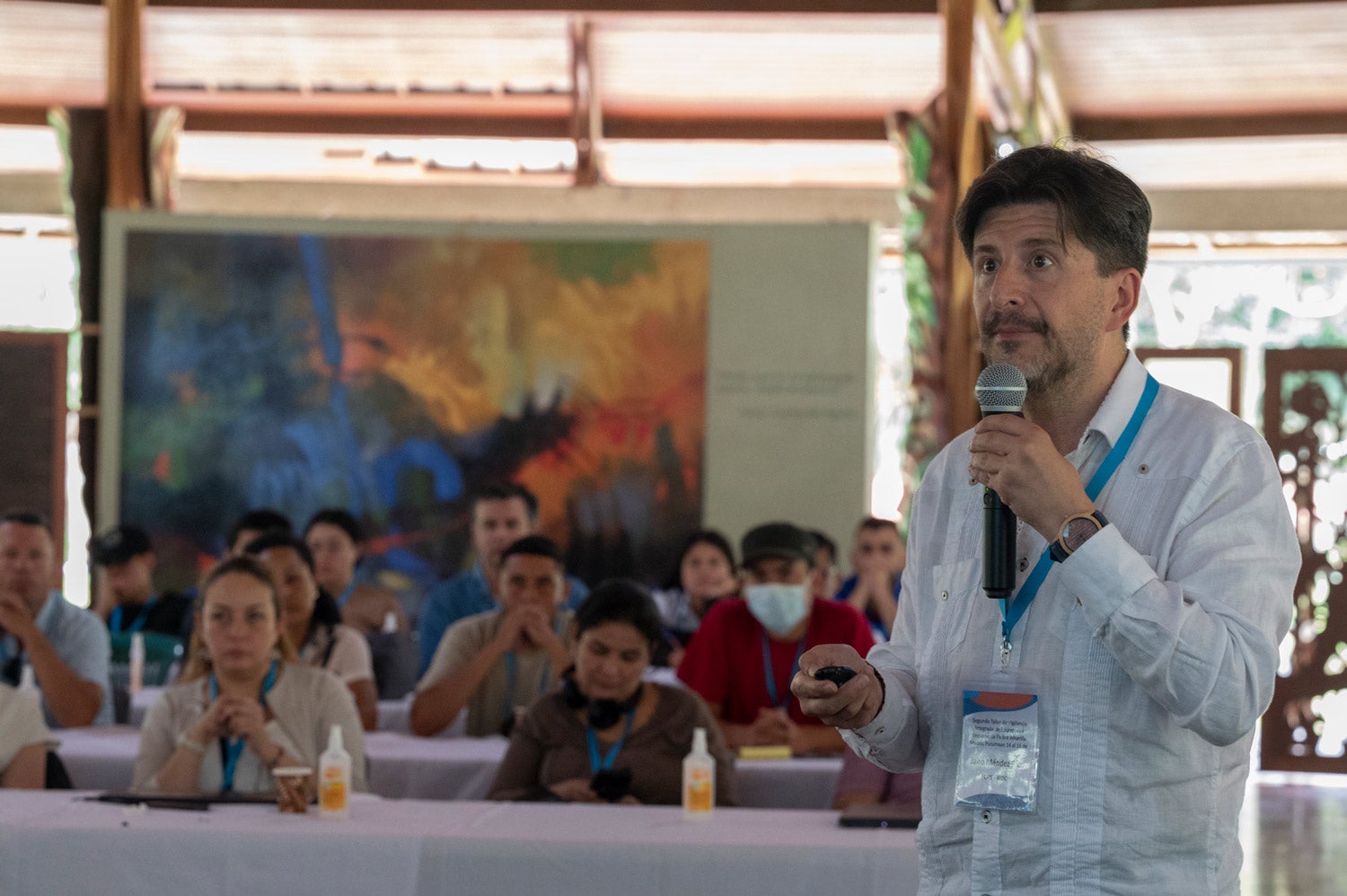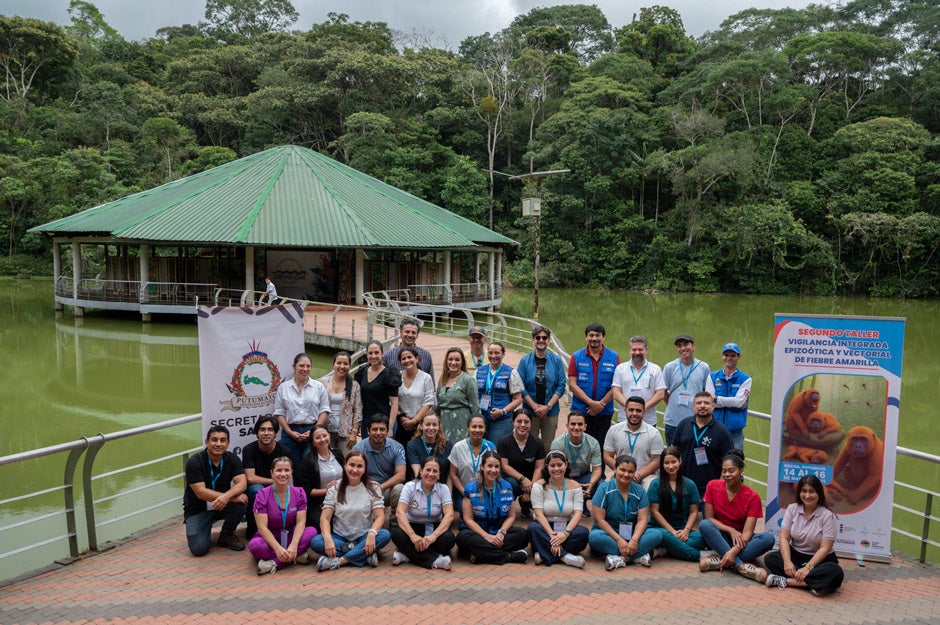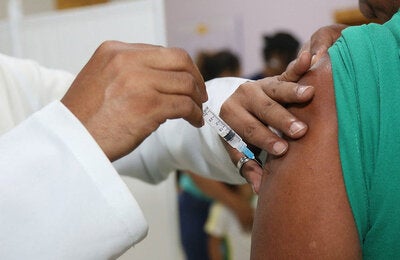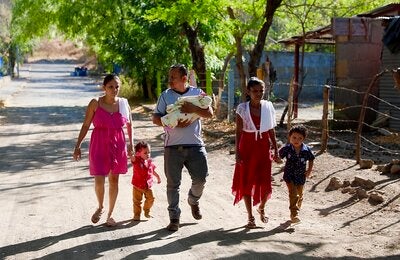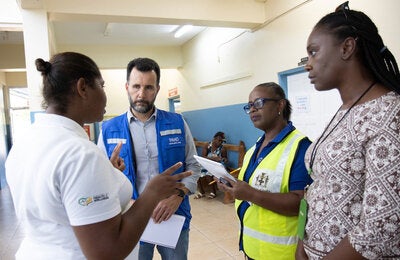
Mocoa, Putumayo, May 19, 2025—To enhance early detection and effective response to yellow fever, the Second Epizootic and Vector Surveillance Workshop was held in Mocoa (Putumayo) from May 14 to 16. Over three days, more than ten regional health teams received intensive training from a panel of national and international experts.
Regarding the yellow fever outbreak currently affecting the country, 23 cases were reported in 2024, with 13 preliminary deaths, representing a fatality rate of 56.5%. As of May 6, 2025, 62 cases have been confirmed, and 25 deaths have been recorded, with a preliminary fatality rate of 40.3%. The most affected departments are Tolima, Antioquia, Cundinamarca, and Meta.
This initiative, developed under the One Health approach, involved professionals from the Ministry of Health and Social Protection (MSPS), the Ministry of Environment and Sustainable Development (MADS), the National Institute of Health (INS), National Natural Parks, the regional office of the Pan American Health Organization / World Health Organization (PAHO/WHO), PANAFTOSA, and representatives from Brazil's Ministry of Health. Theoretical sessions and practical exercises addressed key aspects of integrated disease surveillance.
The workshop covered the national and regional epidemiological situation, intersectoral coordination, surveillance in humans and wildlife, and laboratory diagnosis. Practical activities included sample collection from a recently deceased primate at the Environmental Education Center (CEA), following strict biosafety protocols and vaccination of personnel, and vector collection techniques essential for virus identification and control.
Applied Learnings: The Case of Tolima
Wilder Pérez, support professional for the ETV and zoonosis program at the Putumayo Departmental Health Secretariat, shared how the knowledge gained at the first workshop in Tolima, organized by PAHO/WHO, enabled a timely response to an alert signal: “Thanks to what we learned about proper sample collection in primates, we were able to detect a yellow fever outbreak after finding three dead monkeys simultaneously. Without that knowledge, the animals might have been buried without analysis, missing a critical opportunity to act. Early detection allowed for immediate measures such as vaccinating environmental personnel, conducting entomological studies, and planning for management of the affected area.”
Integrated surveillance—combining monitoring of primates and mosquitoes—was a key theme of the meeting. According to Mauricio Vera, from the Directorate of Communicable Diseases at the Ministry of Health and Social Protection, the recent outbreak in Tolima, after more than a century without cases, has led to key lessons learned and establishing an epizootic surveillance system. “Experiences like this strengthen knowledge transfer between regions, standardize processes, and enable the design of timely interventions that save lives,” he explained.
The collaborative and intersectoral approach was highlighted by Renato Vieira, Veterinary Public Health Advisor at PANAFTOSA, who emphasized the importance of integration for public health protection. “For yellow fever surveillance and control efforts to succeed, human health and animal health components must work together,” he said. Vieira pointed to PANAFTOSA’s presence in Mocoa as an example of this coordination within PAHO, combining efforts in emergency response, human health, vaccination, and primate epizootic surveillance. He also underscored Brazil’s valuable experience in epizootic surveillance, a strategy closely coordinated with immunization programs and considered key to successful prevention, especially in regions with shared ecosystems and geographic challenges.
Ecosystem Health: An Integrated Vision for Prevention
All current cases are linked to the sylvatic cycle —transmitted by forest-dwelling mosquitoes— highlighting the urgent need to maintain high vaccination coverage and prevent the disease's spread to urban areas.
Mayra Alejandra Vargas, from the Ministry of Environment, emphasized the importance of integrating human and environmental health: “One of the most important things we need to understand is that we can no longer see health solely from a human and isolated perspective; as long as there is no ecosystem well-being, there will be no human health. The primates, who are currently the most affected, are closely related to us, and what puts them at risk will likely put us at risk as well. That’s why sectors must work together, leaving behind fragmented views, to promote ecosystem, human, and animal health, understanding that conserving ecosystems is a priority for our health and well-being in all contexts.”
Mauricio Cerpa, international advisor on health emergencies at PAHO/WHO, highlighted the organization’s role in supporting the outbreak response: “PAHO has supported not only vaccination efforts, but also coordination, leadership, clinical management, and integrated surveillance. However, active community participation and clear communication are essential to overcome this emergency.”
The conclusion of this workshop in Mocoa marks a decisive step in strengthening Colombia’s national strategy to confront yellow fever. The joint work between institutions, sectors, and communities enhances the country’s capacity to anticipate and respond effectively to outbreaks, protecting human, animal, and ecosystem health.

